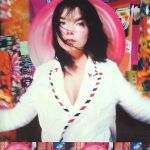
The element of air in fashion history
Every time designers have taken inspiration from the four elements
February 20th, 2023
According to cosmogony, the fundamental elements of the Earth are four: fire, air, earth, and water. For ancient philosophers, the air was the emblem of balance, the mediator of water and fire, an element synonymous with a purity of spirit and vivid imagination. Perhaps for these very reasons, it has been easy for the fashion world to translate this element into clothes, drawing inspiration from the elegant flow of the wind and the lightness of clouds, sometimes for the design of accessories, sometimes for the concept of entire collections.
Leaving aside the countless times when designers have chosen tulle to make princely ruffles, or the airy silhouettes that have made designers such as Issey Miyake and Iris Van Harpen undisputed leaders of anti-gravity fashion, let's rediscover together the most famous cases in which air has become the protagonist during past fashion weeks, from Virgil Abloh's hyper-realistic graphics to Hussein Chalayan's "Remote Control" airplane dress.
Inflatable fashion
We'll spare you the inflation/economics/fashion jokes, but it's on everyone's lips: designers like balloons. Maybe it's because the pandemic has made everyone nostalgic for their childhood, or maybe it's because making Sam Smith wear an all-black jumpsuit is very funny. Still, it seems like the new trend of 'puffy' clothes and accessories is on the crest of a wave, like a mattress lost at sea. The impending economic doom that has greeted us this 2023 has manifested itself in the fashion world first with the disappearance of jewelry from red carpets, then with this craze for puffy looks. Before Sam Smith's suit designed by Harri, there were in order of anachronistic appearance: the loafers and "soft" bags by Prada - a collection christened "Puff-ification of Prada" by TikTok - and Jacquemus, the Loewe bomber jacket beloved by it-girls Kendall Jenner and Taylor Russel, and the SS2023 collection by the king of multicolored humor Jeremy Scott, who is never slow to jump on the self-deprecating fashion bandwagon. «I took inflation and put it in the collection,» the designer said backstage. It is not known exactly who was the first designer to "air" this trend, although some have tried to point their finger at the ultra-discussed collection that designer Fredrik Tjærandsen showed in 2019 as his dissertation at London's Central Saint Martins University.
Blue skies and hazy hyperrealism
As with fire, the imagery of air has also made graphic and hyper-realistic appearances in the fashion world. Clouds and blue skies filled Louis Vuitton's fabrics and leather goods in 2020 when the fourth show designed by Virgil Abloh took shape during the winter Paris Fashion Week. In addition to the setting, entirely papered with a sunny sky, almost every item in this collection featured hazy graphics. Before Abloh, Jonathan Anderson and Bill Gaytten also experimented with these graphics, in 2017 for Loewe and 2013 for John Galliano respectively, while last year, Sarah Burton took up the same images for some looks of Alexander McQueen's SS22 line, as a symbol of freedom and unruliness. «To relinquish control and be directly in touch with the unpredictable is to be part of nature,» Burton explained, «to see and feel it at its most intense, to be at one with a world bigger and more powerful than ourselves.»
McQueen and Chalayan, technologies compared

Björk wearing Chalayan's Airmail dress for her album cover Post
Few times one can avoid mentioning the myth of Alexander McQueen when talking about fashion shows with a sophisticated concept. Despite the fact that the British designer has very often chosen fire and the color red in his collections, such as in 'Joan' and 'Highland Rape', and in the numerous homages to his Scottish roots, among his most famous fashion shows - which are basically all of them - 'The Widows of Culloden' certainly stands out. Staged in March 2006, the collection debuted in Paris, on a wooden catwalk flanked by a glass pyramid similar to that of the Louvre. The sound of the wind was incorporated into the show's soundtrack to suggest cold skies, while the models walked the runway wearing winged creations by Irish hatter Philip Treacy, a tribute to the designer's historic muse Isabella Blow and a clear reference to McQueen's lifelong passion for using animals for symbolic purposes. Despite the unforgettable sophistication of the collection, the highlight was the arrival of Kate Moss, who floated through the air through a hologram wrapped in white organza ruffles. It was a memorable moment, not so much for the use of this advanced technology, but more so for the choice to cast Kate Moss, a supermodel who just a few months earlier had lost multiple contracts with established designers after being at the center of a major scandal, photographed by the British media while doing cocaine at a party. With an evocative image that left the audience speechless, McQueen made Moss a dreamlike floating vision, re-establishing her reputation as a great icon.
Cypriot designer Hussein Chalayan also used another great piece of 'winged' inspiration for his 1999 Echoform collection, a designer who, like McQueen, went down in history for his high-production shows that intertwined fashion with performance art. Presented on an all-white go-kart-like runway, the collection was opened by a jaw-dropping futuristic look: a shiny fiberglass dress assembled with the look of an airplane fuselage which, when model Audrey Marney reached the apex of the runway, began to move, raising some of its segments imitating the pre-takeoff movement of an airplane's wings. The concept behind this design, based on the designer's intricate relationship with the world of aviation and migration, was also taken up by Chalayan with the Airmail Dress, a dress made of a paper-like fabric called Tyvek that can be folded and sent, like a letter that «can become a symbol of absence or presence.»





































.jpg)




















































